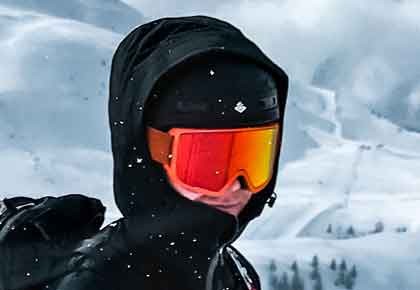How do I find the right ski helmet?
With a ski helmet you were considered an exotic until a few years ago. Today, the helmet is part of the standard equipment of (almost) every skier and snowboarder. According to KFV, the wearing rate is more than 90%. This is reflected positively in the accident statistics. So that you are also safe in the coming winter on the slopes, we have summarized for you a buying guide for ski and snowboard helmets.
First of all, the most important thing is that your desired helmet either meets the European safety standard DIN EN1077, or the North American standard ASTM F-2040. Helmets that meet these standards is safe and tested!
Which type of helmet suits me?
Full shell or half shell
This is the first question you should ask yourself. Full-shell helmets extend over the ears and are used primarily for ski racing. Half-shell helmets provide adequate protection for the recreational athlete. They are comfortable to wear and have good ventilation.
Hard shell helmets
These helmets consist of two components, an outer shell and an inner shell. Both parts are produced separately and later glued together. Ventilation systems and additional grids are placed between the two shells for greater comfort and safety.
In-mold helmets
Through a thermal process, after molding the outer shell, a foam core is foamed directly into the shell. Thus, the two components become one solid part. In-mold helmets are particularly lightweight.
Hybrid helmets
Are a combination of the two previous models. In the hard shell as the inner workings of the in-mold technology is installed. For this, the helmet is lightweight and has a high impact resistance.
Helmets with integrated visor / ski goggles
An optimal solution for spectacle wearers. The integrated visor provides sufficient ventilation so that the glasses do not tarnish. Also the wearing comfort is high,nothing can press, as with regular ski goggles.
This is how the helmet should fit:
The first step is to determine the size of your helmet. Simply measure the circumference of your head (about a finger's width above the eyebrow) and use a size chart to determine the right size. Keep in mind that the sizing can vary from manufacturer to manufacturer. Here is the size chart from our manufacturer POC as a guide:

Now it's time to try it on. Your helmet should sit firmly and comfortably on your head without a closed chin strap. You can confirm the optimum fit with the shake test. To do this, put on the helmet and shake your head vigorously. If the ski helmet sits firmly on the head without slipping sideways or even falling off, you have found the right one. Accurate fit and wearing comfort are the most important!
With many ski helmets you can still make a fine adjustment by a wheel at the back of the head. Also the exchange of the padding can distinguish a size. This always depends on the manufacturer or the model.
Please also check at the time of purchase whether your ski goggles fit the helmet. A buying guide and even more info on ski goggles you can read in this blog article: Schikönig buying guide for ski goggles
When do I have to replace the ski helmet?
As a rule, a well-maintained ski helmet lasts up to five years. The high UV radiation in the mountains takes its toll on the material. Cracks appear on the outer shell and the helmet becomes brittle. But light blows and falls also accelerate the aging process. If you discover even minor damage, it is essential to replace the helmet. The same applies after heavy falls. So please watch out for scratches and cracks!
Clean your ski helmet properly
Skiing and snowboarding can be quite sweaty, so you should clean your helmet at least once a season. Remove sweat, dander and dirt to prolong the life of your ski helmet.
The following steps are necessary:
- Carefully loosen upholstery and wash by hand. Air dry and if necessary use a disinfectant for textiles.
- Wipe helmet exterior and interior with a damp cloth. Please do not use cleaners with solvents
Schikönig Tip: Store your ski and snowboard helmets best protected from UV rays. This also applies to the car.
Rental helmets & hygiene
Of course, you can also rent ski and snowboard helmets at a reasonable price. Our rental helmets are replaced after the second season at the latest. After each rental all helmets are checked for damage, disinfected and cleaned.

